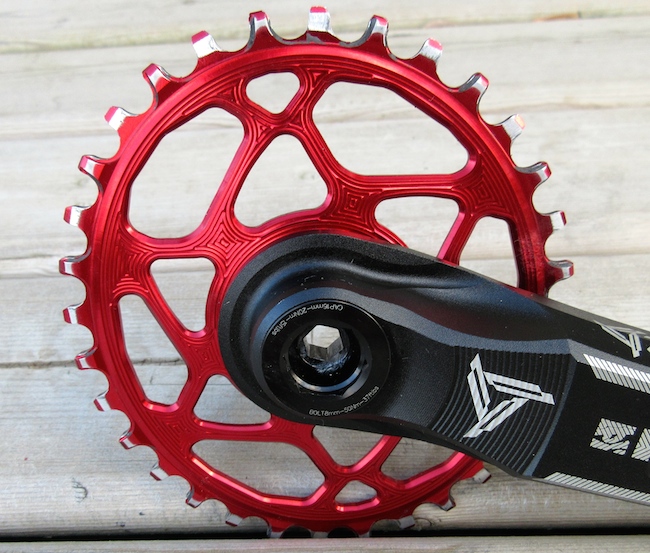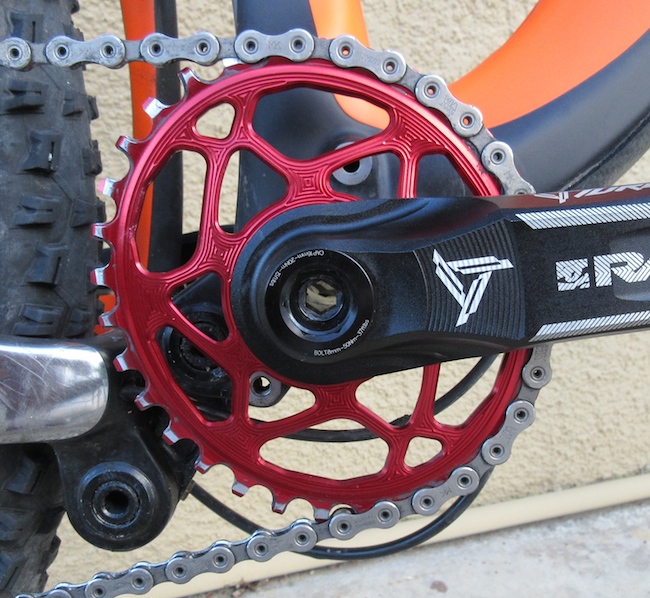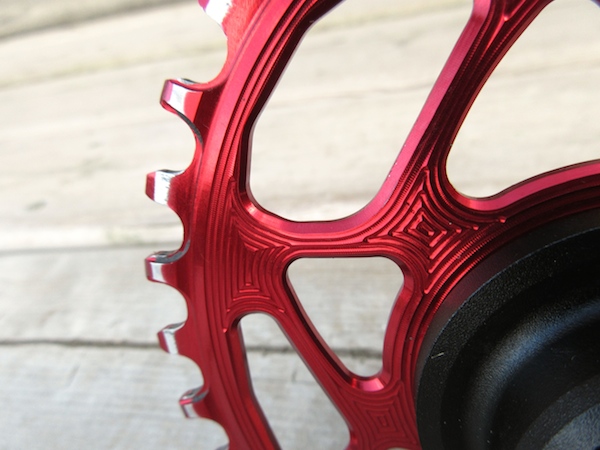
Whats with Oval Chainrings?
Absolute Black sent us a sample of their stunning Absolute Black Oval Chainrings. Why oval you ask? The benefits to oval rings have been discussed and tested for over 100 years. Do they work? Some labs say they do. In fact some of the latest Tour De France winners use them! But there is some contradictory evidence out there saying the benefits are negligible but a lot of it comes down to personal preference.
In the article where we featured oval chainrings, the basic idea of them is that no human can produce a perfect pedal stroke. When a cyclist’s legs are at the 6, and 12 o’clock part of the pedal stroke it is impossible to produce the same amount of power as one would produce while on the down or upstroke (3 or 9 o’clock). The oval chain ring is designed to make this process smoother by effectively reducing the gear (or making it easier) during these stages of the pedal stroke.

Absolute Black Oval Chainrings
Absolute Black claims that not only are their chainrings more efficient but they are also easier on knees and joints. These bio-mechanical benefits can be denied but in the mountain bike world you also have the benefit of increased traction on soggy days (as the force is spread out more evenly throughout the pedal stroke reducing ‘spin out’) but they also come in a 1x or narrow-wide options AND in fantastic colors!
Initial Impressions and Setup
The Absolute Black oval chainrings we received are beautiful. The machining is extensive, and its obvious there has been a lot of thought and work put into these rings.

Installation is very straight forward. Mechanics are rejoicing everywhere with the emergence of not only the single ring set up, but also direct mount crank systems such as Race Face and Sram where you effectively attach the chainring directly to the crank, as opposed to a ‘spider’ . The benefits are lighter weight, clean look, and to be frank, it has less that can go wrong. The Absolute Black Oval Chainring went on in mere minutes and has been solid ever since on my Race Face crank.
Performance and Final Thoughts.
When doing the first few meters on oval rings the sensation is terrible. Its hard to describe, but its almost as if your bike is trying to buck you off! I considered turning around and taking the chainring off but stuck with it in the spirit of the test.
After mere minutes that feeling oddly dissipates and you are left riding with ‘normal’ riding sensations. Its a mystery to me why this happens but it does!
While its hard to say if the benefits of the chainrings are real from a power output point of view, the traction benefits are apparent. On a duel suspension sometimes it feels as if you are fighting the bike while on steep climbs. I found the chainrings smoothed out the pedal stroke and generally made for a better ride with more traction. I would go as far to say that I will continue to ride with oval rings from now on as there are many benefits with no real down side.
Chain retention with Absolute Black Oval Chainrings is fantastic. In 2 months, I never lost a chain once, despite having it on both a duel suspension and hard tail bike frame leaving the clutch mechanism off! This goes to show Absolute Black have made a great ring, as they have been ridden primarily on some of the roughest trails of British Columbia.
In conclusion this ring is fantastic. It’s light, it’s pretty, it works very well. I can’t really say a bad thing about it.
